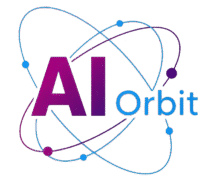The landscape of human-computer interaction is rapidly evolving, driven by advancements in Artificial Intelligence. Voice AI, in particular, is revolutionizing how we engage with technology, enabling more intuitive and natural conversations. Concurrently, sophisticated AI agents are gaining the capacity to comprehend intricate queries and execute tasks autonomously on our behalf. This article delves into the cutting-edge developments in building these intelligent AI voice agents, specifically focusing on the integration of Pipecat with Amazon Bedrock, and introducing a transformative approach with Amazon Nova Sonic.
FROM CASCADED TO UNIFIED: THE EVOLUTION OF VOICE AI AGENTS
In the realm of conversational AI, traditionally, voice agents were constructed using a "cascaded models" approach. This method, explored in the first part of this series, involves orchestrating several distinct components to process a voice interaction:
- Automatic Speech Recognition (ASR): Converts spoken words into text.
- Natural Language Understanding (NLU): Interprets the meaning and intent behind the text.
- Text-to-Speech (TTS): Generates human-like speech from text responses.
While this cascaded approach offers significant flexibility and modularity, allowing developers to swap out individual components as needed, it comes with inherent challenges. The sequential nature of processing – speech to text, then text to understanding, then understanding to text, and finally text to speech – can introduce cumulative latency. For real-time, fluid conversations, even minor delays can disrupt the user experience, making interactions feel unnatural or cumbersome. Furthermore, the decoupling of components can lead to a loss of subtle vocal cues, tone, and prosody that are crucial for truly human-like dialogue, as these characteristics are not directly carried through the pipeline from input to output.
AMAZON NOVA SONIC: A GAME CHANGER IN SPEECH-TO-SPEECH AI
Addressing the limitations of the cascaded approach, Amazon has introduced Amazon Nova Sonic, a groundbreaking speech-to-speech foundation model. This innovation marks a significant leap forward in conversational AI, designed to deliver real-time, remarkably human-like voice conversations with unparalleled price performance and exceptionally low latency.
What sets Nova Sonic apart is its unified model architecture. Instead of processing speech through discrete ASR, NLU, and TTS stages, Nova Sonic integrates these capabilities into a single, cohesive model. This means that audio input is processed in real time with a single "forward pass." The result is a dramatic reduction in latency, as the system doesn’t need to hand off data between separate models. Moreover, by unifying these functions, Nova Sonic can better preserve and dynamically adjust voice responses based on the acoustic characteristics and conversational context of the input, leading to more fluid and contextually appropriate dialogue that mimics natural human interaction.
ARCHITECTURAL ADVANTAGES OF AMAZON NOVA SONIC
The unified architecture of Amazon Nova Sonic offers several compelling advantages for building highly responsive and intelligent voice agents:
- Real-time Responsiveness: The single forward pass significantly minimizes processing delays, ensuring conversations flow smoothly without noticeable lags. This is critical for applications requiring immediate feedback, such as customer service bots or interactive assistants.
- Enhanced Conversational Nuance: By understanding the acoustic characteristics and conversational context directly from the audio input, Nova Sonic can intelligently adjust its voice responses. This includes recognizing natural pauses, hesitations, and turn-taking cues, enabling the agent to respond at precisely the right moments and manage interruptions seamlessly, much like a human would.
- Streamlined Development: Developers no longer need to orchestrate multiple distinct models. The consolidated nature of Nova Sonic simplifies the development process, reducing complexity and potential points of failure.
- Integrated Tool Use and Agentic RAG: Beyond basic conversation, Amazon Nova Sonic supports advanced functionalities like tool use and agentic Retrieval Augmented Generation (RAG) through integration with Amazon Bedrock Knowledge Bases. This empowers voice agents to retrieve specific, accurate information and perform complex actions based on user queries, vastly expanding their utility. For example, an agent could answer questions by fetching data from a company’s internal documents or complete a booking by interacting with an external API.
The choice between the cascaded model approach (as outlined in Part 1) and the unified Amazon Nova Sonic model depends on the specific use case and requirements. While Nova Sonic offers state-of-the-art performance for conversational fluidity and latency, the cascaded approach might still be suitable for scenarios requiring maximum modularity or the ability to customize specific ASR, NLU, or TTS components independently for highly specialized applications.
A POWERFUL COLLABORATION: AWS AND PIPECAT
To ensure seamless integration and widespread adoption of this cutting-edge technology, AWS has collaborated closely with the Pipecat team. Pipecat, an open-source framework for voice and multimodal conversational AI agents, now supports Amazon Nova Sonic in its version v0.0.67, making it remarkably straightforward for developers to incorporate these advanced speech capabilities into their applications.
Kwindla Hultman Kramer, Chief Executive Officer at Daily.co and the visionary Creator of Pipecat, articulated the significance of this partnership:
"Amazon’s new Nova Sonic speech-to-speech model is a leap forward for real-time voice AI. The bidirectional streaming API, natural-sounding voices, and robust tool-calling capabilities open up exciting new possibilities for developers. Integrating Nova Sonic with Pipecat means we can build conversational agents that not only understand and respond in real time, but can also take meaningful actions; like scheduling appointments or fetching information-directly through natural conversation. This is the kind of technology that truly transforms how people interact with software, making voice interfaces faster, more human, and genuinely useful in everyday workflows."
He further elaborated on the future vision:
"Looking forward, we’re thrilled to collaborate with AWS on a roadmap that helps customers reimagine their contact centers with integration to Amazon Connect and harness the power of multi-agent workflows through the Strands agentic framework. Together, we’re enabling organizations to deliver more intelligent, efficient, and personalized customer experiences—whether it’s through real-time contact center transformation or orchestrating sophisticated agentic workflows across industries."
This collaboration underscores a shared commitment to empowering developers with the tools to create highly sophisticated, responsive, and truly intelligent voice AI experiences.
GETTING STARTED: IMPLEMENTING YOUR VOICE AI AGENT
For developers eager to leverage Amazon Nova Sonic and Pipecat, a comprehensive code example is provided to illustrate the fundamental functionality. This example serves as a practical guide for building a complete voice AI agent.
PREREQUISITES FOR DEVELOPMENT
Before diving into the code examples, ensure you have the following prerequisites in place:
- Python 3.12+ installed on your development machine.
- An AWS account configured with the necessary AWS Identity and Access Management (IAM) permissions for accessing Amazon Bedrock, Amazon Transcribe, and Amazon Polly.
- Confirmed access to Amazon Nova Sonic on Amazon Bedrock.
- An API key for Daily.
- A modern web browser (e.g., Google Chrome or Mozilla Firefox) with robust WebRTC support for microphone access.
STEP-BY-STEP IMPLEMENTATION GUIDE
Once you have met the prerequisites, follow these steps to set up your sample voice agent:
- Clone the repository:
git clone https://github.com/aws-samples/build-intelligent-ai-voice-agents-with-pipecat-and-amazon-bedrock
cd build-intelligent-ai-voice-agents-with-pipecat-and-amazon-bedrock/part-2 - Set up a virtual environment:
cd server
python3 -m venv venv
source venv/bin/activate # On Windows: venv\Scripts\activate
pip install -r requirements.txt - Create a .env file with your credentials:
DAILY_API_KEY=your_daily_api_key
AWS_ACCESS_KEY_ID=your_aws_access_key_id
AWS_SECRET_ACCESS_KEY=your_aws_secret_access_key
AWS_REGION=your_aws_region - Start the server:
python server.py - Connect using your web browser at http://localhost:7860 and grant microphone access.
- Initiate a conversation with your newly deployed AI voice agent.
CUSTOMIZING YOUR AI VOICE AGENT
To tailor your voice AI agent to specific needs or enhance its capabilities, you can begin by:
- Modifying the bot.py file to alter the conversation logic, allowing for bespoke conversational flows.
- Adjusting model selection within bot.py to fine-tune for your desired balance of latency and quality.
For more detailed customization options and in-depth understanding, refer to the README of the code sample on Github.
ENSURING A CLEAN WORKSPACE
The provided instructions facilitate setting up the application in a local environment, which interacts with AWS services and Daily using your IAM and API credentials. For robust security and to prevent unintended costs, it is imperative to delete these credentials once your development or testing is complete. This ensures they are no longer accessible or prone to unauthorized use.
SHOWCASING INTELLIGENT VOICE AGENTS IN ACTION
The practical application of these technologies was compellingly demonstrated at the keynote of AWS Summit Sydney 2025. Rada Stanic, Chief Technologist, and Melanie Li, Senior Specialist Solutions Architect – Generative AI, showcased a scenario featuring an intelligent healthcare assistant. Additionally, a simple "fun facts" voice agent was demonstrated in a local environment utilizing SmallWebRTCTransport. As users interacted, the voice agent provided real-time transcription displayed in the terminal, highlighting the immediate responsiveness and accuracy of the system.
ENHANCING AGENTIC INTELLIGENCE WITH STRANDS AGENTS
Beyond direct conversational capabilities, a powerful method for boosting an AI agent’s overall intelligence and capacity for complex understanding involves implementing a general tool call that delegates specific tasks to an external agent. One such external agent framework is Strands Agents.
This delegated Strands Agent can then engage in sophisticated reasoning, formulate plans, and execute multi-step tasks by making various tool calls. Upon completion, it returns a summarized and actionable response to the parent voice agent. This approach, often referred to as the agent as tools pattern, allows the voice agent to handle queries far beyond its direct programming.
Consider a simple example: If a user asks, "What is the weather like near the Seattle Aquarium?" the voice agent can delegate this complex query through a general tool call, such as handle_query. The Strands Agent, upon receiving this query, will "think" about the task:
<thinking>I need to get the weather information for the Seattle Aquarium. To do this, I need the latitude and longitude of the Seattle Aquarium. I will first use the 'search_places' tool to find the coordinates of the Seattle Aquarium.</thinking>The Strands Agent will then execute the search_places tool call to obtain the coordinates, followed by a get_weather tool call using those coordinates. The final weather information is then returned to the parent voice agent as part of the handle_query tool call. This multi-step reasoning and execution significantly enhance the agent’s ability to provide comprehensive and accurate responses, much like how powerful language models, such as those found in tools like Free ChatGPT, can process and respond to complex textual prompts.
For more detailed examples and hands-on experience, explore the hands-on workshop on this topic.
THE FUTURE OF CONVERSATIONAL AI
Building intelligent AI voice agents has become more accessible and powerful than ever, thanks to the synergistic combination of open-source frameworks like Pipecat and the robust foundation models available on Amazon Bedrock. This series has elucidated two primary methodologies for constructing AI voice agents:
- In Part 1, we explored the cascaded models approach, dissecting each component of a conversational AI system.
- In this Part 2, we delved into the transformative power of Amazon Nova Sonic, a speech-to-speech foundation model that streamlines implementation and unifies these diverse components into a single, highly efficient model architecture.
The continuous innovation in AI promises even more exciting developments. Looking ahead, stay tuned for the emergence of multi-modal foundation models, including the anticipated Nova any-to-any models. These innovations are poised to further refine and enhance your voice AI applications, pushing the boundaries of what’s possible in human-computer interaction.
ADDITIONAL RESOURCES
To deepen your understanding and kickstart your own voice AI projects, consider the following resources:
- Explore our comprehensive code sample on Github.
- Participate in our hands-on workshop: Building intelligent voice AI agents with Amazon Nova Sonic, Amazon Bedrock and Pipecat.
If you’re ready to embark on your own voice AI journey, reach out to your AWS account team to explore potential engagements with the AWS Generative AI Innovation Center (GAIIC), where experts can help design and scale your generative AI solutions.

